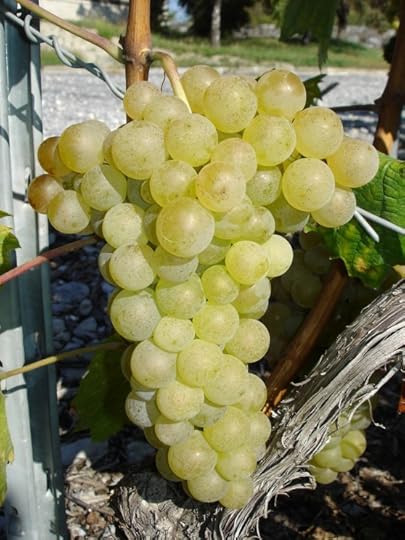Wine and DNA profiling
Since the advent of DNA profiling of grape varieties in 1993, classical ampelography (gr. ámpelos=vine and lógos=study) has been significantly shaken up. Here is a short overview of the impact of DNA studies on wine:
Wrong labelling
In ampelographic collections, about ten living plants of each grape variety or clone are kept alive for future studies or plantings, which requires a large amount of time and money. Yet, in every collection we estimate an average of 5% of labelling errors. They can now be identified with DNA profiling and duplicates can be eliminated, thus saving time and money.
For example, at the United States Department of Agriculture’s National Clonal Germplasm at Davis in California, Mondeuse Noire from Savoy (France) was long confused with Refosco dal Peduncolo Rosso from Friuli (Italy). Thanks to DNA testing that false identification was put to an end.
In Australia, the grape variety imported from Spain and spread under the name Albariño turned out to be an earlier labelling error in a collection in Galicia (Spain), as it was recently identified as the Savagnin Blanc, to the chagrin of producers who had to correct their marketing strategy. (While I understand the promotion issue, I find this rather good news given the high esteem that I have for the wines made of Savagnin, especially Heida from Switzerland and Vin Jaune from the Jura!)
Synonyms and homonyms
DNA profiling can unexpectedly identify or reject synonyms. For example, the famous Zinfandel from California was long suspected to be identical to Primitivo from Puglia (Italy), which was confirmed by DNA profiling. After a long DNA research nicknamed the “Zinquest”, it was established in 2001 that this variety is native to the Dalmatian coast where it is unofficially called Crljenak Kaštelanski. More recently, in 2011, DNA profiling of a 90-year-old herbarium sample from Dalmatia enabled the identification of the official and historical name of this grape variety: Tribidrag.
Another example, Altesse from Savoy (France) has long been identified with Furmint from the Tokaj region in Hungary, which was conclusively refuted by DNA testing.
 Gouais Blanc, the “mother of all grapes”. Photo courtesy of José Vouillamoz.
Gouais Blanc, the “mother of all grapes”. Photo courtesy of José Vouillamoz.The same name can be inadvertently given to different varieties, resulting in what we call homonyms. For example, in Spain several varieties are all called ‘Albillo Something’; the same happens in several countries with Barbarossa Something’ and ‘Schiava Something’ in Italy; and ‘Muscat Something’ or ‘Malvasia Something’ in a number of Mediterranean countries. Yet in may cases these different varieties are in fact not genetically related. Thanks to DNA profiling, these homonym confusions can be solved.
Parentage
DNA paternity testing has revealed several unexpected parentages. The first and most surprising was discovered in 1997 by Prof Carole Meredith and her PhD student John Bowers at the University of California in Davis: Cabernet Sauvignon was shown to be a natural, spontaneous crossing between Cabernet Franc and Sauvignon Blanc, which no one had ever suspected. Since then, other parentage discoveries have debunked some popular legends and have shed some light on the true origins of famous grape varieties: Merlot is a half-brother of Cabernet Sauvignon, because it was found to be a spontaneous progeny of Cabernet Franc and an almost extinct variety named Magdeleine Noire des Charentes; Chardonnay and Gamay from Burgundy are two brothers born from natural crossings between Pinot Blanc and Gouais Blanc, the latter an obscure variety that has been banned in France since several centuries; Syrah is a natural offspring of Dureza from Ardèche and Mondeuse Blanche from Savoy; Sangiovese is half Tuscan and half Calabrian since it is a natural progeny of the Chianti grape variety Ciliegiolo and Calabrese di Montenuovo, an obscure variety from Calabria, etc. Last but not least, the parentage of Tempranillo, the most important variety in Spain, was discovered after the release of my book Wine Grapes (co-authored with Jancis Robionson and Julia Harding).
Some books will tell you that Tempranillo was introduced into Spain by the Cistercian monks of the Abbey of Cîteaux in Burgundy, and that it is possibly a distant cousin of Pinot which took the pilgrim route to Santiago de Compostela. I suggest that you close these books. In 2012 this legend was invalidated with the discovery of the parents of Tempranillo: it is a natural crossing between Albillo Mayor, an old variety form Ribera del Duero where Tempranillo is historically known as Tinta del País (red of the land), and an obscure and almost extinct variety from Aragon called Benedicto, of which we practically know nothing. The crossing must have taken place somewhere between Aragon, Rioja, Castile y León and Navarre, before the first mention of Tempranillo in Rioja in 1807.
Classical ampelography and DNA profiling are complementary sciences whose synergy allows us to better understand the migrations of grape varieties, as well as their kinship, providing a better understanding of the future of wine growing.
The post Wine and DNA profiling appeared first on OUPblog.

Oxford University Press's Blog
- Oxford University Press's profile
- 238 followers



